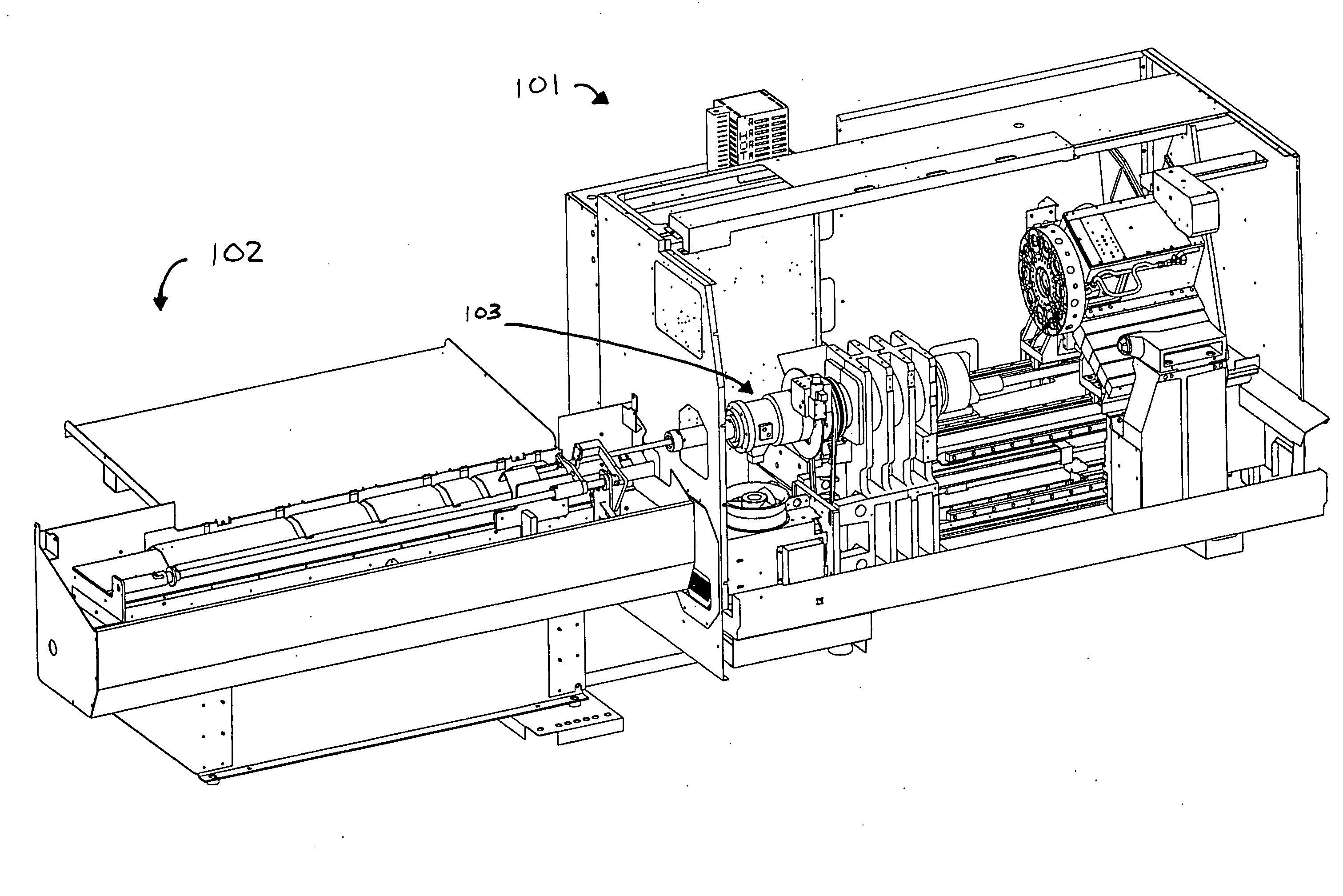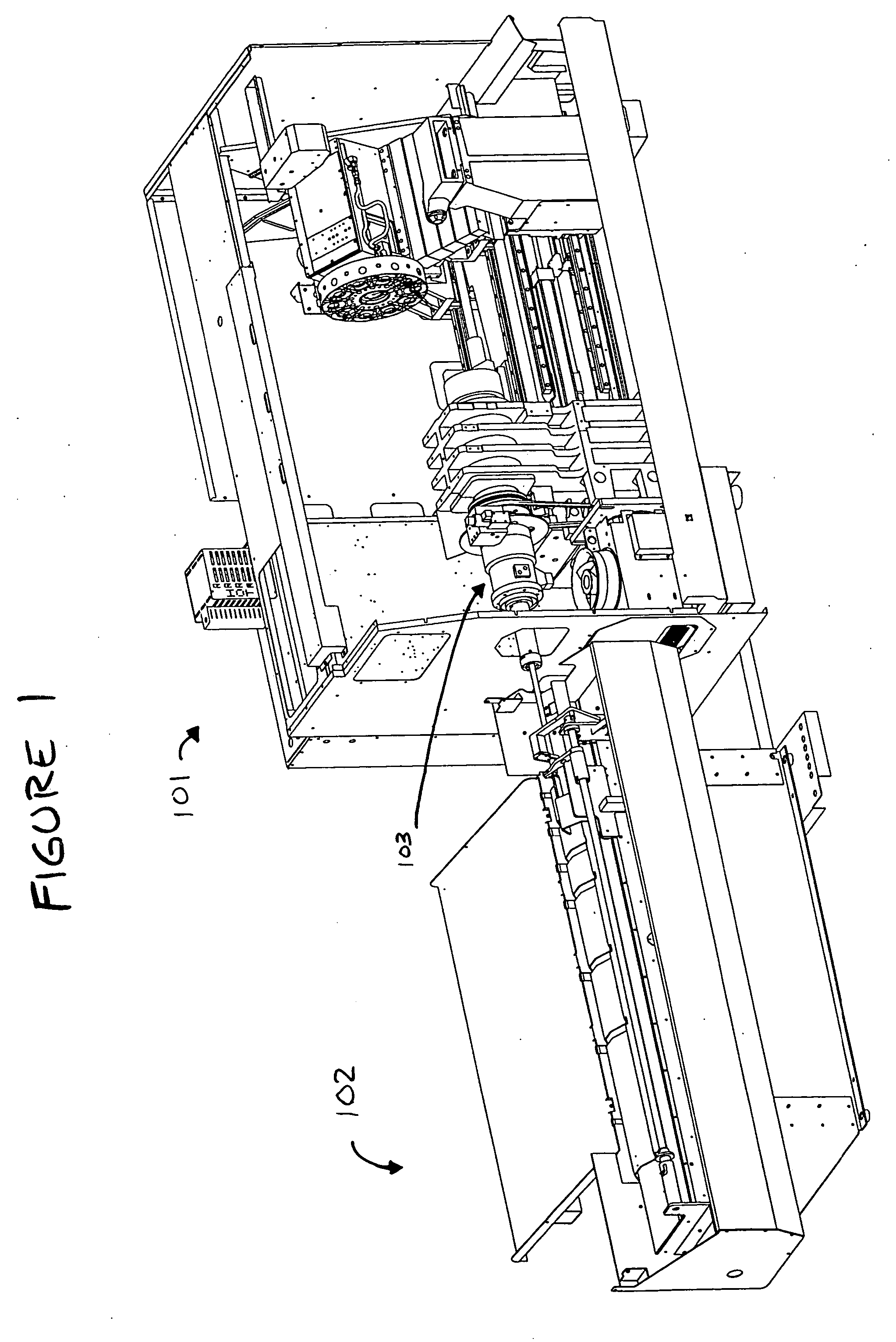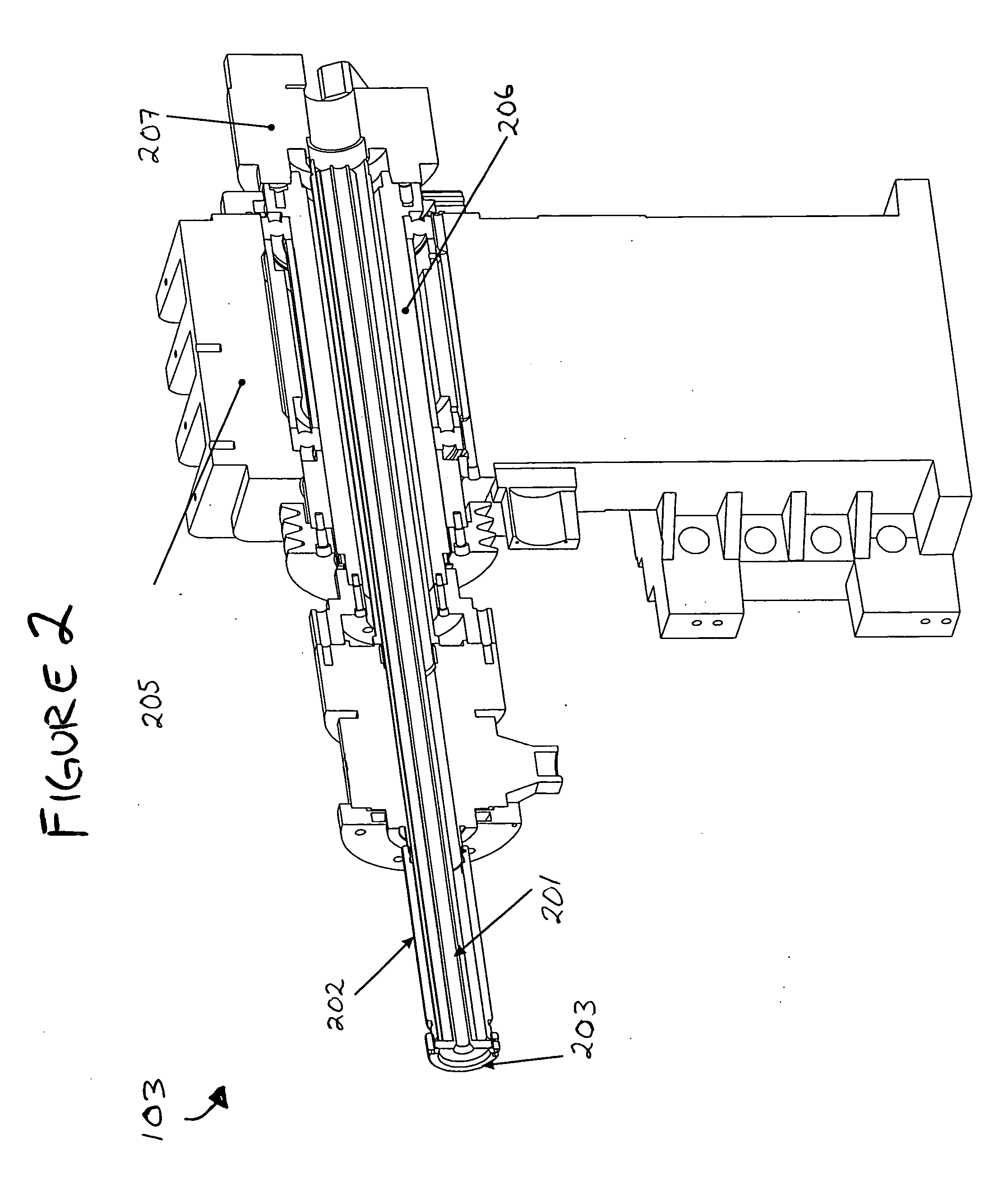Finned spindle liner
a spindle and lining technology, applied in the field of lining a hollow spindle, can solve the problems of reducing the service life requiring post-cast machining to remove defects, so as to reduce the diameter of the hollow spindle, increase the rotational inertia of the spindle assembly, and reduce the effort
- Summary
- Abstract
- Description
- Claims
- Application Information
AI Technical Summary
Benefits of technology
Problems solved by technology
Method used
Image
Examples
Embodiment Construction
[0019] In the following detailed description, numerous specific details are set forth to provide a full understanding of the present invention. It will be apparent, however, to one ordinarily skilled in the art that the present invention may be practiced without some of these specific details. In other instances, well-known structures and techniques have not been shown in detail to avoid unnecessarily obscuring the present invention.
[0020]FIG. 1 depicts a metal turning machine tool 101 and an automatic stock feeder 102 in which a spindle liner of the present invention can be used. Machine tool 101 includes spindle assembly 103, which is illustrated in greater detail in the partial cut-away view of FIG. 2. Spindle assembly 103 includes a spindle housing 205, through which passes a spindle 206, in which is disposed a spindle liner 201. Spindle liner 201 is secured to spindle 206 by connecting retaining device 203 to liner adapter 202. Retaining device 203 may be a retainer plate, a r...
PUM
| Property | Measurement | Unit |
|---|---|---|
| Length | aaaaa | aaaaa |
| Diameter | aaaaa | aaaaa |
| Density | aaaaa | aaaaa |
Abstract
Description
Claims
Application Information
 Login to View More
Login to View More - R&D
- Intellectual Property
- Life Sciences
- Materials
- Tech Scout
- Unparalleled Data Quality
- Higher Quality Content
- 60% Fewer Hallucinations
Browse by: Latest US Patents, China's latest patents, Technical Efficacy Thesaurus, Application Domain, Technology Topic, Popular Technical Reports.
© 2025 PatSnap. All rights reserved.Legal|Privacy policy|Modern Slavery Act Transparency Statement|Sitemap|About US| Contact US: help@patsnap.com



